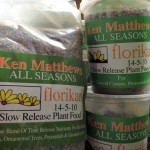 I was raised in Canberra, Australia’s capital city, which is situated between beautiful snow capped mountains and laidback beaches. Riding my bike, enjoying nature and the different flora and fauna so unique to Australia occupied much of my free time.
I was raised in Canberra, Australia’s capital city, which is situated between beautiful snow capped mountains and laidback beaches. Riding my bike, enjoying nature and the different flora and fauna so unique to Australia occupied much of my free time.
One of my fondest memories was in 1988 when we celebrated the Bicentennial of Australia and the 75th birthday of Canberra. As part of the year-long celebration, a flower festival was held in spring (September through October). This one-time event was so popular that it literally blossomed into an annual event called Floriade, which means ‘to design with flowers’.
Planning for the Floriade begins 18 months beforehand. Imagine a million blooms at one time: 78 different varieties of tulips and many more varieties of annuals. All this amazing color covers over 95,000 square feet of garden beds! The result is a breathtaking tapestry of glorious colors, that changes throughout the month as blooms fade and new ones take their place.
I know you will not have 400,000 visitors trekking through your garden to enjoy your spring bulb display. However, when those shriveled lumps of nothing that you planted in autumn suddenly begin to appear this month, it is a signal of the beginning of a season of renewal. A joy that becomes your very own flower festival!
-Danielle Evans
Fertilize, that is!
Florikan is a specific tree and shrub fertilizer that has a way of knowing when to release food to the plant – and when not to. It is temperature sensitive, so when it’s cold outside, the plant receives no food – it doesn’t need it – but when the temperatures rise, the fertilizer is released and the plant is able to use it.
Florikan feeds a plant from the root to the leaf. You will notice yellowing, shallow leaves turn dark green and lush, and blooms will be bigger and more vibrant. Follow the recommended fertilizing program and your plants will be more healthy and beautiful from season to season.
Certain deciduous trees and shrubs – Crepe Myrtles, Viburnum, Hydrangea varieties, Roses and a host of others – are best pruned now while they are dormant and leafless. The plants’ structure is easier to see, and pruning needs to be done before the plant buds out.
Certain evergreen shrubs can be pruned now for restructure and reduction. Hard pruning – as we call it – is the best way to reduce, thin out and shape overgrown and aged shrubs. This method of pruning seems harsh, but most shrubs respond to this type of pruning with vengeance.
Please check with our garden associates on what trees and shrubs can safely be pruned this month.
We recommend selective, hand pruning (not hedge trimmers) on all plant material to achieve a neat and natural appearance rather than a sheared, “boxy” or round effect.
WHY PRUNE?
1. Developing Form: This type of pruning is what applies most to newly planted shrubs and trees. The objective is to shape the plant as it grows, keeping in mind the natural growth form of the plant material and its desired appearance in the landscape. Pruning to develop form in young material should be done at least once a year. The growth habit of some plants would dictate that pruning be done two or three times a year. Sucker shoots around the base of a plant (Crepe Myrtle in particular) should be removed as they appear.
2. Rejuvenation: This type of pruning is done on shrubs that become overgrown, spindly or flower poorly. It generally entails cutting a plant back more severely to get it back to a point where it can be maintained with more frequent, but less drastic, shaping. Heavy pruning for rejuvenation is best done during winter dormancy.
3. To Remove Injured or Damaged Parts: This type of pruning should be done whenever it is needed. Broken branches should be removed just above a strong, lateral branch. Winter die-back can be pruned out in early spring, removing enough of the damaged branch so that the cut is disguised by the remaining foliage.
WHEN to PRUNE
Spring Flowering Shrubs – Prune immediately after they are finished blooming
Late Summer Flowering Shrubs – Prune either during winter dormancy or in early spring
Broadleaf Evergreens – Prune soon after blooming (Rhododendrons and Azaleas) or as necessary to maintain form
Evergreens – Juniper and Yew varieties can be pruned anytime as needed to maintain shape. Most evergreen tree varieties will not require annual pruning.


